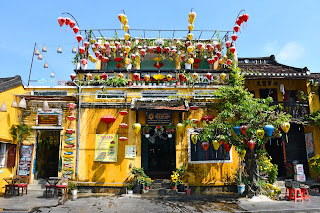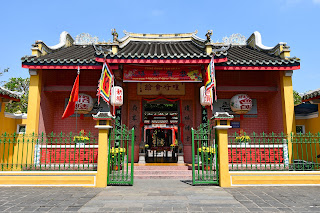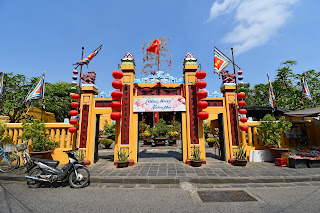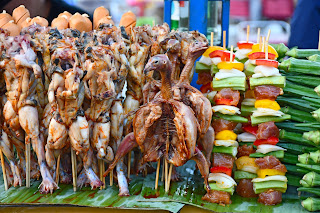Vietnam North to South – Day 9: Hội An and Mỹ Sơn
In the morning, we visited a silk workshop just outside the historic centre of Hội An. The demonstration was interesting: we saw tiny silkworms grazing on macerated mulberry leaves, and their larger cousins slowly preparing to weave their cocoons in wooden frames. After boiling the cocoons, the women working at the shop deftly unpick them and prepare the material for spinning and sewing. Although I enjoyed the show, we spent another hour at the shop, which I felt was rather excessive.
We toured Hội
An until noon, traversing the three main streets of the historic centre.
Unfortunately, the star attraction of the town, the Japanese Bridge (Chùa Cầu)
was undergoing significant renovations when we visited. From what we could
tell, a large portion of the wooden components had been removed and would
either be restored or replaced. From the site of the bridge, we continued to
the Old House of Tan Ky, an eighteenth-century merchant with a penchant for
ornate wooden furniture. We then proceeded to tour the various assembly halls
scattered around town: the Fujianese, Chaozhouese, Hainanese, and Cantonese.
After finding some snacks to get us through the day, we boarded our bus and rode to Mỹ Sơn. As the erewhile capital of the Shaiva Hindu Cham Kingdom, the religious complex was built up between the 4th and 14th centuries, and only subjugation by the Vietnamese and their subsequent genocide of the Cham people triggered its downfall. During the Vietnam War (or, as it is called in Vietnam, the American War), Mỹ Sơn was used by the Vietcong and sustained heavy damage by US bombing. Restorations of buildings are ongoing, and some have successfully been brought back into a somewhat less dilapidated state. In several places, a wall decorated in bas-reliefs of apsaras overlooks an overgrown crater left behind by an explosion.
When we returned to Hội An in the evening, my dad and I walked around the historic centre again. There were even more tourists in the city than during the day, and boats with big lanterns flocked the waters in huge numbers. We did not have any revolutionary culinary experiences that evening, though it was interesting to look into the selections of stalls and see barbecued frogs and individual octopus tentacles.



























































Comments
Post a Comment